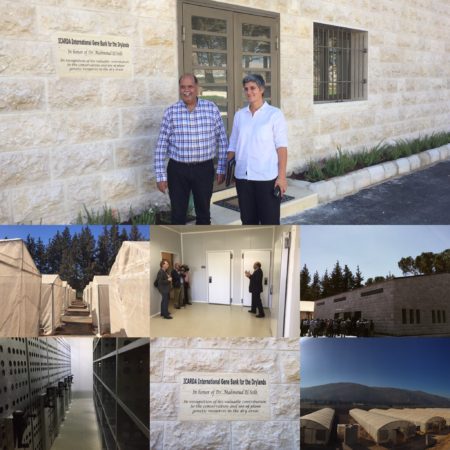- How the truffle got its mate: insights from genetic structure in spontaneous and planted Mediterranean populations of Tuber melanosporum. More outbreeding in plantations, but strong structure still.
- Comparing genetic diversity of pig populations on the US mainland, Pacific Islands and China: Y chromosome evaluation. 16 breeds, 5 haplotypes, 10 breeds with only 1.
- What we use is not what we know: environmental predictors in plant distribution models. Edaphic factors are being ignored. ‘Twas ever thus.
Watch people having food at the World Food Prize
You all know you can live stream different bits of the World Food Prize whatnot, right? Including the breakfasts and lunches, which seems extreme, and yet at the same time appropriate. I just hope orange-fleshed sweet potatoes are on the menu.
International Agrobiodiversity Congress less than a month away
The 1st International Agrobiodiversity Congress will be taking place in New Delhi, India from November 6-9, 2016. All the usual suspects will be there, and then some. We always say this, and we never (well, rarely) get any takers, but I’ll say it again for completeness, and because the social media arrangements for this particular shindig are unclear from the website: if you’re going to be there, and would like to blog about the proceedings, let us know, and we’ll make it happen.
Brainfood: Genomic data edition
- When more is better: how data sharing would accelerate genomic selection of crop plants. It’s the data sharing, stupid.
- Genomic prediction contributing to a promising global strategy to turbocharge gene banks. See what I mean?
- Conservation of Animal Genetic Resources – A New Tact. Yeah, for animals too.
- Indigenous stocks as treasure troves for sustainable livestock production in the 21st century: Insights from small ruminant genomics. See what I mean?
A new dawn in Lebanon, and ICARDA
If you’re one of the lucky few who follow me on social media, you’ll know I was in Lebanon last week for the opening of the new ICARDA genebank. It was great to meet the dedicated team of Lebanese and Syrian staff who are re-establishing the active collection at Terbol in the Bekaa Valley, with material obtained from Svalbard late last year. And it was also great to be back in Lebanon after almost 25 years. Some things are still the same. But many have changed, and there’s hope in that.
